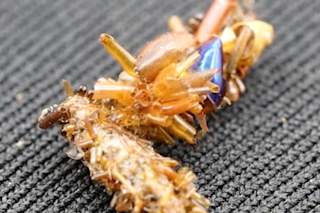What's the News: Researchers have uncovered the youngest known dinosaur bone, dating from shortly before an asteroid slammed into Mexico's Yucatan peninsula around 65 million years ago. The find, published today in Biology Letters, has revived debate among paleontologists over what, exactly, killed the dinosaurs. What's the Context:
Scientists generally agree that the asteroid's impact triggered some sort of mass extinction, a time called the Cretaceous-Tertiary, or K-T, boundary.
Some researchers say the asteroid, which may have led to a thermal pulse or something like a nuclear winter, is what did the dinosaurs in.
Others say dinosaurs were dying out before the asteroid hit, as a result of volcanic eruptions, climate change, or shrinking inland seas.
The K-T boundary is a clearly demarcated layer in the sedimentary rock of the Earth's crust. Below it is a zone about 10 feet thick often called the "three-meter gap" because of the lack ...













